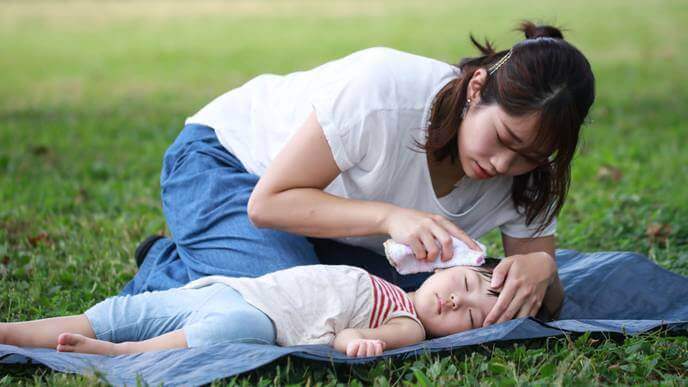ReachMD

Despite prevention efforts, a child dies of heatstroke in a vehicle approximately once every 10 days. According to a new survey of caregivers conducted by researchers at Children’s Hospital of Philadelphia (CHOP), most caregivers report they never leave children in their vehicles for any length of time. However, the attitudes toward those who were thought to put their children at risk for pediatric vehicular heatstroke are largely negative, which may cause some caregivers not to adopt important mitigation efforts to prevent these tragic deaths.
The findings were recently published in the journal Accident Analysis & Prevention.
In the United States in 2019, 53 children died in hot vehicles, one of the highest incident rates in 20 years, bringing the total number of pediatric vehicular heatstroke deaths over two decades to more than 900. In 2019, slightly more than half of those deaths resulted from a caregiver forgetting a child in the vehicle. However, approximately 20% of these deaths occurred when caregivers intentionally left their children in a vehicle. The problem is a global one, with one nonprofit group in Australia reporting that 5,000 unsupervised children are rescued from vehicles each year.
Despite recognition of this ongoing issue, there is little information regarding how often, where, or why caregivers leave children in vehicles, and little is known about attitudes regarding the risks for these incidents and potential mitigation strategies for avoiding these deaths. With a long-term goal of developing effective pediatric vehicular heatstroke prevention strategies, researchers wanted to understand how caregivers perceive their own risks and their attitudes toward prevention strategies.
“We believe this is the first study to characterize the scenarios in which children may be left in the car but do not die, and determine which caregivers engage in this behavior,” said lead study author Emma Sartin, PhD, MPH, a research scientist with the Center for Injury Research and Prevention (CIRP) at CHOP. “Going through this initial process with a large U.S. sample helps us determine who might be most at risk of engaging in this behavior and inform how we design prevention advocacy and strategy.”
The study found that among 1,500 caregivers surveyed, 88% reported they do not leave their children alone in vehicles for any amount of time. There were differences among those who do leave their children behind including gender, education, income, and number of children. Few respondents (12%) believe they were at any risk for having a child suffer from heatstroke in a vehicle, and most caregivers described negative and possibly judgmental views of those who were at risk of endangering their children. Nearly everyone who participated in the survey (95%) indicated that it was important that caregivers receive education about the risk of pediatric vehicular heatstroke, and 90% would be willing to adopt risk mitigating technology themselves, many believing that they and others would be perceived as better caregivers if they adopted these strategies.
“These findings support the idea that most caregivers believe that something like in-vehicle heatstroke couldn’t happen in their families, an idea which may actually increase risks. Yet our results also suggest that there is a substantial number of caregivers who are willing to change behavior if the message is framed positively and not based on threats or scare tactics,” Sartin said. “This is important insight to help us identify new ways of preventing these tragic deaths from ever taking place, as well as which caregivers may be at higher risk.”
“We found it very encouraging that nearly all caregivers indicated they were willing to use risk-mitigating technology to help prevent a child from being left in their vehicle,” said Jalaj Maheshwari, MSE, a research associate at CIRP and co-lead author of the study. “Technology-based solutions to preventing pediatric heatstroke have been increasingly incorporated into child restraint systems and vehicles, particularly since the passage of the Hot Cars Act in 2021 which requires all new passenger motor vehicles to be equipped with a child safety alert system. But we know there is an equally important behavioral component to addressing this issue.”
This study was supported by the Toyota Collaborative Safety Research Center.
Sartin et al, “US Caregivers’ Attitudes and Risk Perceptions towards Pediatric Vehicular Heatstroke: A National Survey.” Accid Anal Prev. Online June 21, 2023. DOI: 10.1016/j.aap.2023.107147.
Original Article: LINK

